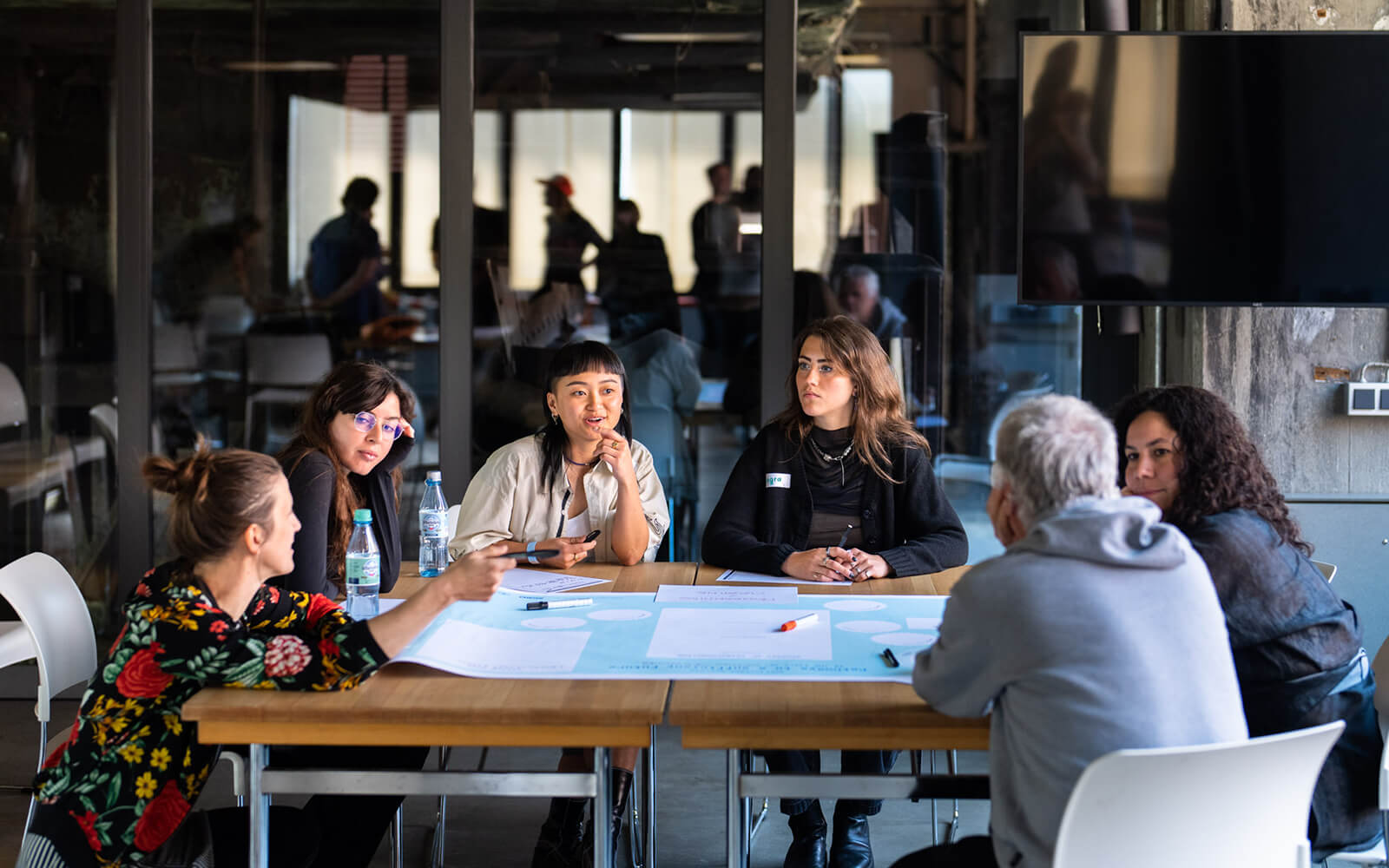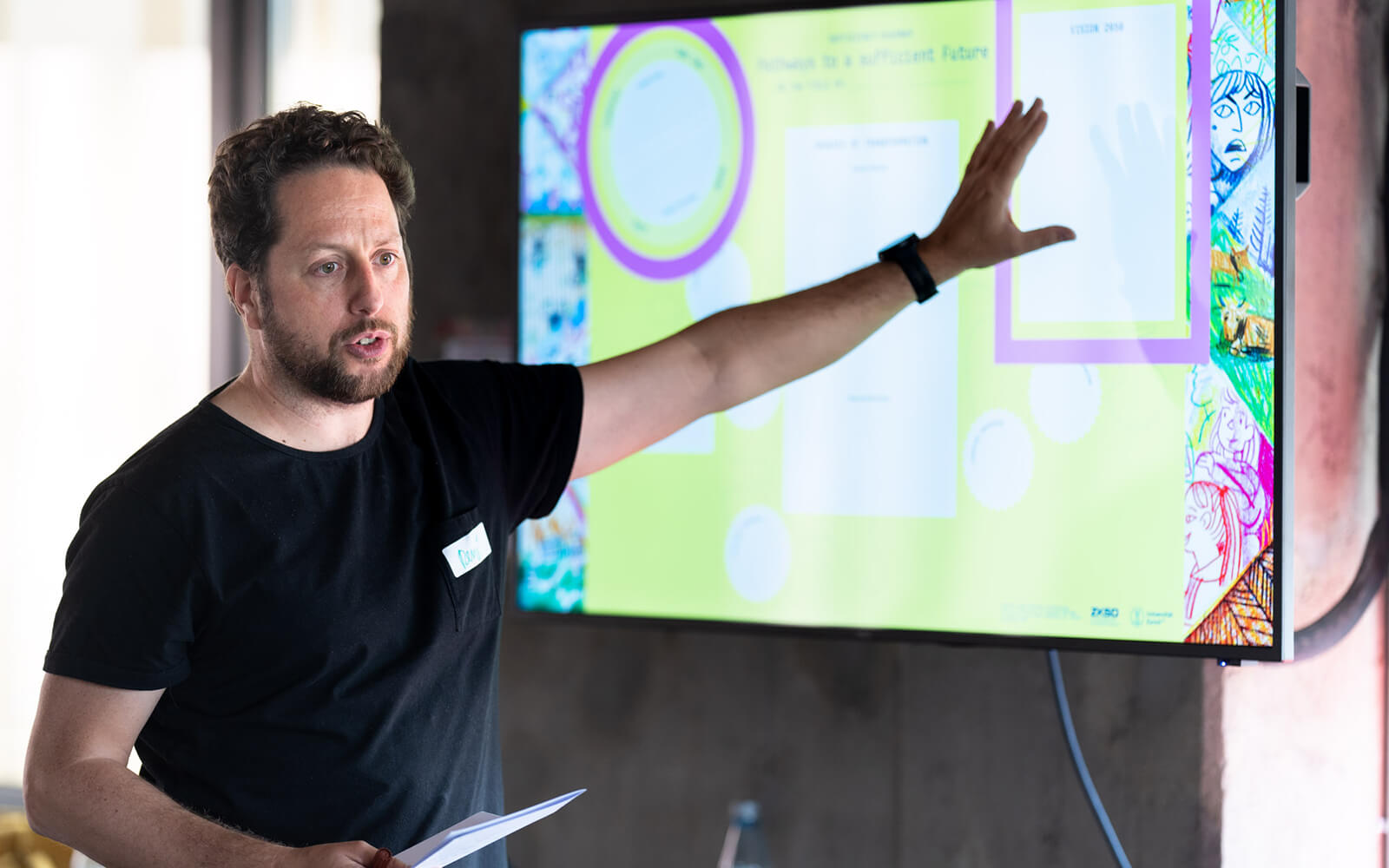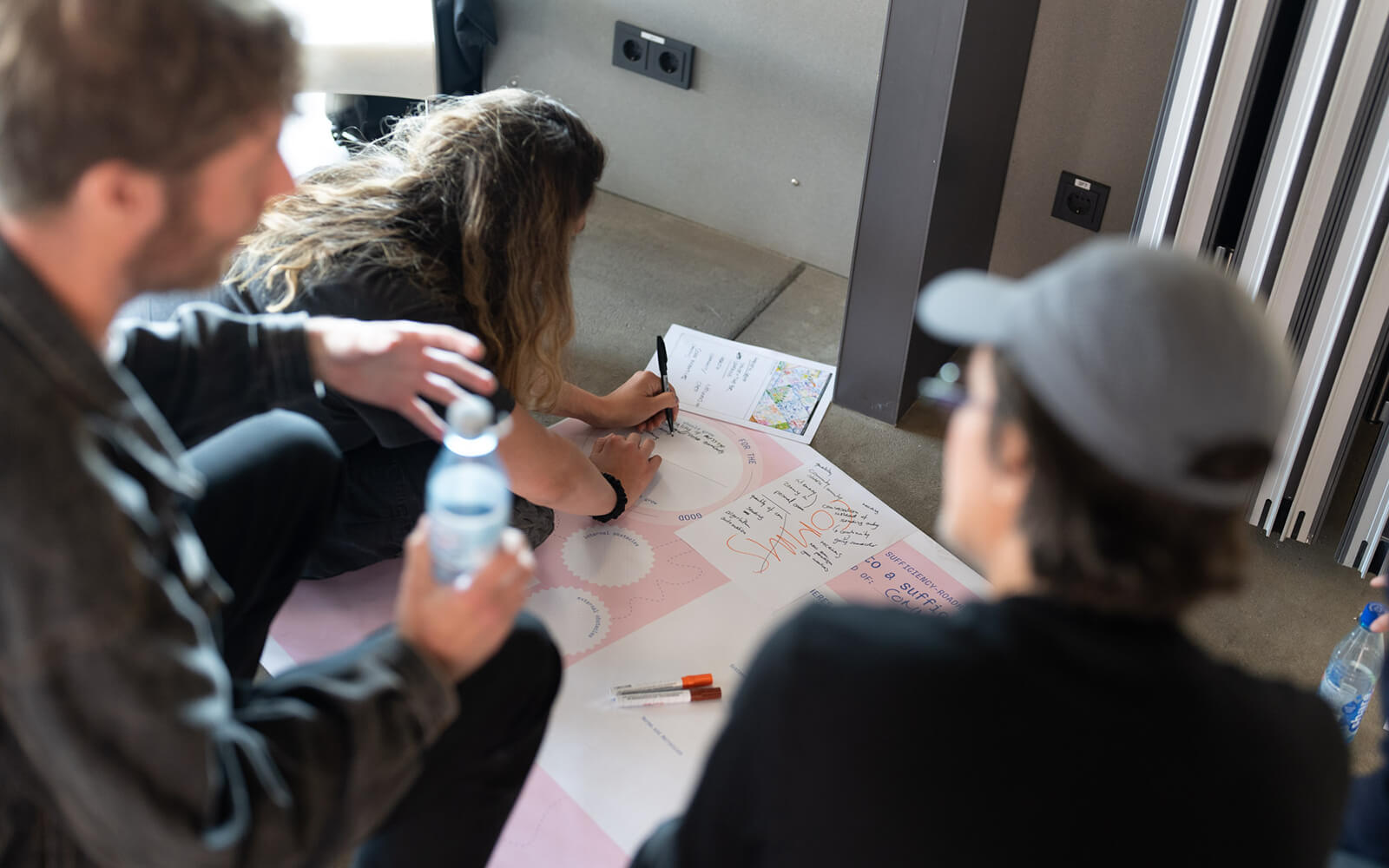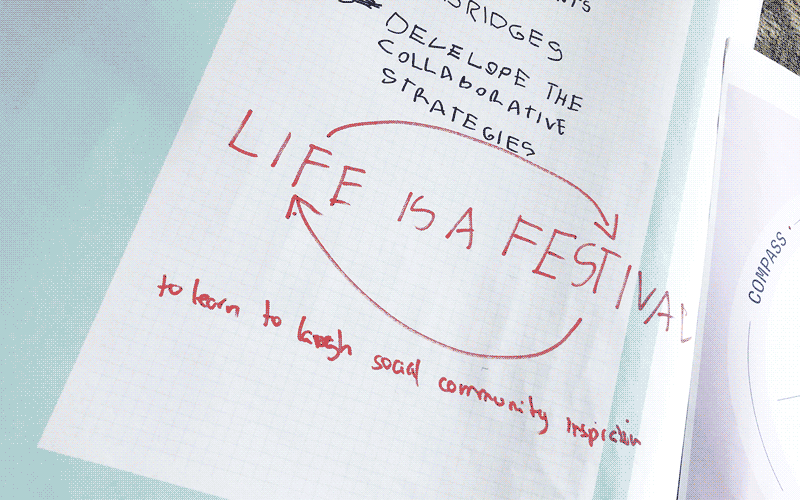← Explore
Lab Report: As the climate crisis accellerates, the environmental impact of culture looms ever larger. Can festival makers cut back?
For festival workers, it’s hard to take in NEW NOW festival and not think about what the site, a former coal mine, and the post-industrial imaginaries on view mean for cultural production. There’s a direct connection between Zollverein’s fossil fuel legacy and the enormous footprint of the cultural sector. Festivals may be innovators but they’ve yet to address (or fully acknowledge) the true costs of international logistics and powering huge shows. The trends, it seems, all point in the wrong direction: shows get bigger, not smaller, and the growing appetite for immersive spectacles—look no further than London’s Outernet and the Las Vegas Sphere—begs some fundamental questions: What are the metrics for engaging audiences meaningfully? How can we best serve our communities? And what kind of precedents do we want to set for the future?
To find out, NEW NOW curators Jasmin Grimm and Rafael Dernbach invited Wiktoria Furrer and René Inderbitzin, two researchers from the Zurich Knowledge Center for Sustainable Development (ZKSD), to put festival makers and goers to the test. In an opening weekend workshop that comprised a series of self-reflection and visioning exercises, they encouraged this heterogeneous group of professionals and members of the public to unlearn growth-driven practices and rethink cultural production and consumption.
Workshop: “Patchwork Futures: The Challenges of Sufficiency” with Wiktoria Furrer & René Inderbitzin (Zurich Knowledge Center for Sustainable Development)
Problem: Beholden to funders and the attention economy, festival makers perpetuate infinite growth narratives rather than question them
Vision: Don’t give into the numbers game, cultivate metrics around meaning and community impact instead
In their seminal 1972 report, The Limits to Growth, the international think tank the Club of Rome modelled the economic and population boom far into the 21st Century. The results don’t bode well: On a business-as-usual trajectory—the one we’re currently on—the model predicts overshoot and collapse before 2070. A more granular view into why offers another pivotal paper: In the ”Great Acceleration” graphs, German researchers demonstrate how the exponential rise of atmospheric CO2, methane, soil nitrogen, ocean acidification, and plastic pollution maps one-to-one on the growth of GDP.
There’s a mountain of evidence that economic growth drives the planetary emergency, ZKSD researchers Wiktoria Furrer and René Inderbitzin argue at the beginning of their workshop. We need to reorganize society and, yes, cultural production around eco-sufficiency, they say, because the dominant sustainability strategies, efficiency and consistency, simply aren’t enough. Efficiency improvements do help curb energy and resource use, but demand rebound effects cancel almost all sustainability gains. Over the past 50 years, for example, cars have gotten a lot more fuel-efficient but they’ve also gotten bigger and heavier, and their numbers grew tenfold. The promise that we can meet all our energy needs sustainably by switching to renewables—consistency—doesn’t hold up either: these technology transitions take time and are very resource-intensive.
“We hear more about efficiency and consistency strategies because they’re compatible with growth,” Furrer says of the neoliberal belief that we can mine and engineer our way out of the climate crisis. Eco-sufficiency, a concept first introduced by MIT professor Thomas Princen, promotes alternative models of wealth instead. Only when we prioritize immaterial riches like happiness and community, can the excesses of material consumption, particularly in the Global North, be curbed. That, of course, is easier said than done. “Growth has become such an important mental infrastructure, that it governs how we see and navigate the world,” Furrer says. “It’s incredibly difficult to get rid of.”
The cultural sector, too, is obsessed with growth, the participating festival makers were quick to admit. “Funders don’t care about the quality of the program or the difference your event makes for a community,” says Jeanne Charlotte Vogt, director of Frankfurt’s NODE Forum for Digital Art. “What matters, ultimately, are the stats: number of booked artists, audience size, press clippings, and social media reach. And after a while that gets into your head.” The pressure to perform goes far beyond a single festival edition. On the internet, festivals are in international competition with one another and incentivized to crank out content to feed the algorithm all year round. “We’re locked into FOMO infrastructures,” says NEW NOW’s Rafael Dernbach, “that keep us in a permanent state of stress.”
Festival workers are not the only ones exhausted by the relentless chase for relevancy and attention. “Artists have to deliver under this pressure and are forced to produce, produce, produce because festivals and institutions need their premieres,” says Jarl Schulp, director of Amsterdam’s FIBER festival. And the bigger the premiere, the better. Notoriously underpaid arts writers, then, complete the extractive content cycle, penning glowing reviews that organizations can take back to their funders. “Content, audience, traffic: everything has to be a number to be understood by the system,” groans Future Festivals project lead Maurice Jones. And the system depends on those numbers going up.
Problem: In global competition for relevancy, festivals are incentivized to perform year-round, overwhelming staffers and audiences
Split into groups, workshop participants work through current challenges, from curation to communication.
Vision: Reduce platform dependencies and renounce the algorithmic overlords, find peers to collaborate with and do less better
“Sufficiency comes from the word suffice—to be enough,” René Inderbitzin reminds participants as they head into the visioning sessions. But how much is ‘enough’ to sustain a festival? How many resources do organizations really need, and how should they be distributed internally and throughout their ecosystem?
Naomi Johnson, director of the Toronto-based Indigenous film and media arts festival imagineNATIVE, reminds the group that Indigenous communities have practiced sufficiency for millennia. “We open our festival with the ‘Dish With One Spoon’ wampum, an Indigenous treaty that recognizes everyone’s right to eat—and that you’ll never take more than you need,” she explains. It’s a set of values that runs counter to everything evangelized in Western societies. “We’re conditioned to not just take what we need today but more than we need in preparation for the future,” notes MUTEK founder Alain Mongeau. “Simply existing is difficult.”
To help participants hash out their needs and determine what should and shouldn’t grow, Furrer and Inderbitzin hand out templates for ‘sufficiency roadmaps’ to the year 2050. Split into five groups, participants assessed their current situation, internal and external obstacles, and charted future visions for anything from curation to communication.
The results they came back with echoed many of the challenges and dreams the Future Festivals group articulated early into the project. There was broad consensus, for example, that the grind, production excesses, and unhealthy reporting metrics have to end. We need to do away with platform dependencies and our obsession with exclusivity and novelty. Conversely, there’s infinite potential for things like equity and solidarity to grow. We need more access, accountability, and spaces for un-productivity, participants agreed.
Using ZKSD’s sufficiency roadmaps, workshop participants articulate bold visions for the year 2050 and ways to get there.
But where to begin with the transformation? Ideally early on, Maurice Jones suggests, by reforming education. The privatization of academia, for example, turns universities into workforce production spaces, with little room to experiment and explore alternate ways of thinking and doing. “We need to improve the research experience, where we can embrace the process without the pressure to publish.” More responsible modes of publishing would also help knowledge production, Jones argues. “Researchers could collaborate on fewer but better papers rather than adding to the noise.”
More responsibility is also required in how we use social media. Rather than broadcasting to everyone and around the clock, we could cultivate bespoke and more direct communications and make sure we keep offline audiences in mind, Jeanne Charlotte Vogt suggests. We definitely need to regain control from our algorithmic overlords. For that, we need healthier networks and that might mean boycotting toxic platforms altogether. As HOLO guest editor Nora N. Khan tweeted in support of the WGA writers strike in May 2023, “There is enough content from the last year for the next century.” Khan’s workers rights advocacy also makes a great case for sufficiency.
Everyone agrees that a lot can be achieved with more collaboration—across fields, organizations, and communities. Sharing knowledge and resources may seem an obvious way to reduce emissions and build resilience, but a lot of organizations work in isolation. “It’s important to realize that you’re not alone in what you’re doing,” Alain Mongeau urges fellow cultural workers. “Find your peers and connect with them!”
Early on in the workshop, the festival makers and cultural workers in attendance self-identified as mediators, translators, navigators, and narrators who build bridges between communities, bring stakeholders together, and create access to critical knowledge. Who could be more important for putting society on a path to sustainability? If the predictions made by the Club of Rome are right—and a 2014 expert reassessment suggests they are—we’re headed for degrowth of some kind. It is up to us, the people shaping culture, whether it will take the form of collapse or reformation.



